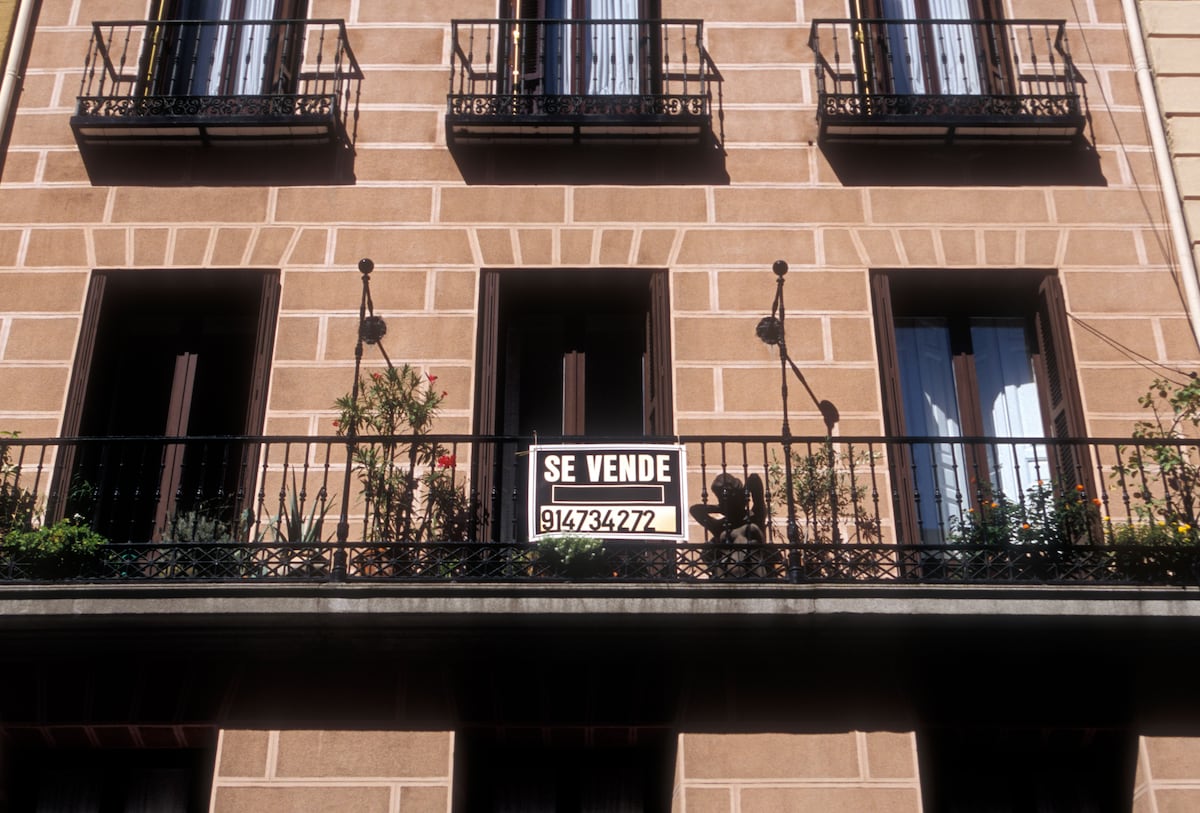Madrid second-hand house prices hit 17-year high after 5.2% rise in last quarter | Madrid News

The price of second-hand homes in Madrid has no ceiling. According to the Fotocasa property index published this Monday, in the last quarter it reached 4,215 euros per square metre, the highest value in 17 years, after an increase of 5.2% compared to the first quarter. This increase represents an annual deviation of 21.2%, while in June last year the figure barely reached 5.7%. In digestible terms: a house that cost 252,000 euros in March is now worth 266,000, while a year ago it was worth around 220,000 euros. The report takes into account the asking price, not the estimated price, and its results cannot be compared with official government data, which refers to the first quarter of this year.
The study concludes that in 14 of Madrid’s 21 districts, second-hand housing has become more expensive per square metre between April and June. Fotocasa estimates that the annual change in the capital is 23.3%. The most significant increases over the quarter were in Vicálvaro (8.5%), Chamberí (8.2%) and Retiro (7.5%). The smallest increases were recorded in Fuencarral-El Pardo (3.0%), Moratalaz (2.5%) and Centro (1.4%). Of course, the Centro district is already among the most expensive to buy a second-hand home, behind only Salamanca and Chamberí. In contrast, the cheapest district to buy a second-hand home is Villaverde, where a square metre costs €1,840.
Maria Matos, director of research for the real estate portal, explained that the current high demand for housing “is confronted with a lack of supply of new homes, which, due to urban development restrictions, land shortages and high construction costs, has led to a tension in prices that is difficult to balance.”
The Madrid Developers Association (Asprima) agrees in a 2023 study that “the supply of new housing is constantly much lower than necessary”. Compare the figures for the creation of family units obtained from the INE with the figures for the creation of housing obtained from the Ministry of Transport, Mobility and Urban Programs (MITMA), and you will conclude that in 2022 alone there was a deficit of 120,000 homes compared to the new families created in Madrid. This figure becomes even more significant if we look at the earlier past: “Over the last seven years, we have put pressure on the second-hand supply, since 250,000 families needed an unfinished home, which logically had an impact in terms of price and, therefore, availability,” concludes the report of the Madrid Developers Association.
Matos, also a Fotocasa spokesman, said that “the turning point (in price growth) was the increase in interest rates in 2022, which boosted demand and has not yet slowed down, generating great interest in home purchases.” This rationale defies the canons of economics, according to which an increase in interest rates should reduce consumption and, as a result, demand for housing. Matos speaks of a “rebound effect” caused by the pandemic, which has generated “a tendency to want to improve the quality of life by buying a better home.” He confirms this statement in a survey carried out by the real estate portal, in which 46% of buyers said they had been affected by the increase in loans, but only 19% had stopped buying for this reason. “The increase in interest rates, being the sharpest in history, has not been able to reduce demand as expected,” concluded Matos, before predicting: “July will also be a month of sharp growth.”
On a regional scale, in 71% of the 35 municipalities analysed by the portal, housing is more expensive today than it was three months ago. In three of them, the increase was double-digit: Humanes, with a 12.7% increase per square metre; Mejorada del Campo, where it increased by 10.3%; and Boadilla del Monte with 10.2%. Despite this, the most expensive areas to buy a second-hand home in the Community remain La Moraleja, where a square metre is valued at 5,621 euros; the capital of Madrid, which costs 5,359 euros; and Pozuelo de Alarcón, with an estimated value of 4,519. The other side of the coin can be seen in Ciempozuelos, San Lorenzo de El Escorial and Colmenar Viejo, where the price per square metre of second-hand housing fell by 10.6%, 9.7% and 6.8% respectively.
What’s happening closest to you has the most impact. Subscribe to stay up to date.
KEEP READING
Gonzalo Bernardos, professor of economics at the University of Barcelona, warns that the prices on which the real estate portals’ reports are based refer to the asking price, which is not necessarily the final price at which the property is sold, which may be revised during the purchase process. In his opinion, “the difference between closing prices and what the owner initially asks is becoming increasingly significant”, and he estimates that the difference can reach 35%.
While Matos acknowledges that “the sale price matters” when measuring changes in home values, he estimates that the gap between the asking price and the sale price is a maximum of 10%. “There is very little variation because Fotocasa properties are on the market for less than a month, so there is little room for negotiation.”
According to Fotocasa’s national calculations, the increase in prices of second-hand housing in the country will be 3%. Madrid is second only to the Balearic Islands with an increase of 7.2%, followed by the Valencian Community with an increase of 5.4%. In terms of amounts paid, it is the second most expensive square metre after the Balearic Islands. Only five CC AA managed to keep the quarterly difference below one percentage point: the Canary Islands, Aragon, Catalonia, Castile and Leon and La Rioja.
Subscribe here to our Madrid newsletter, published every Tuesday and Friday
